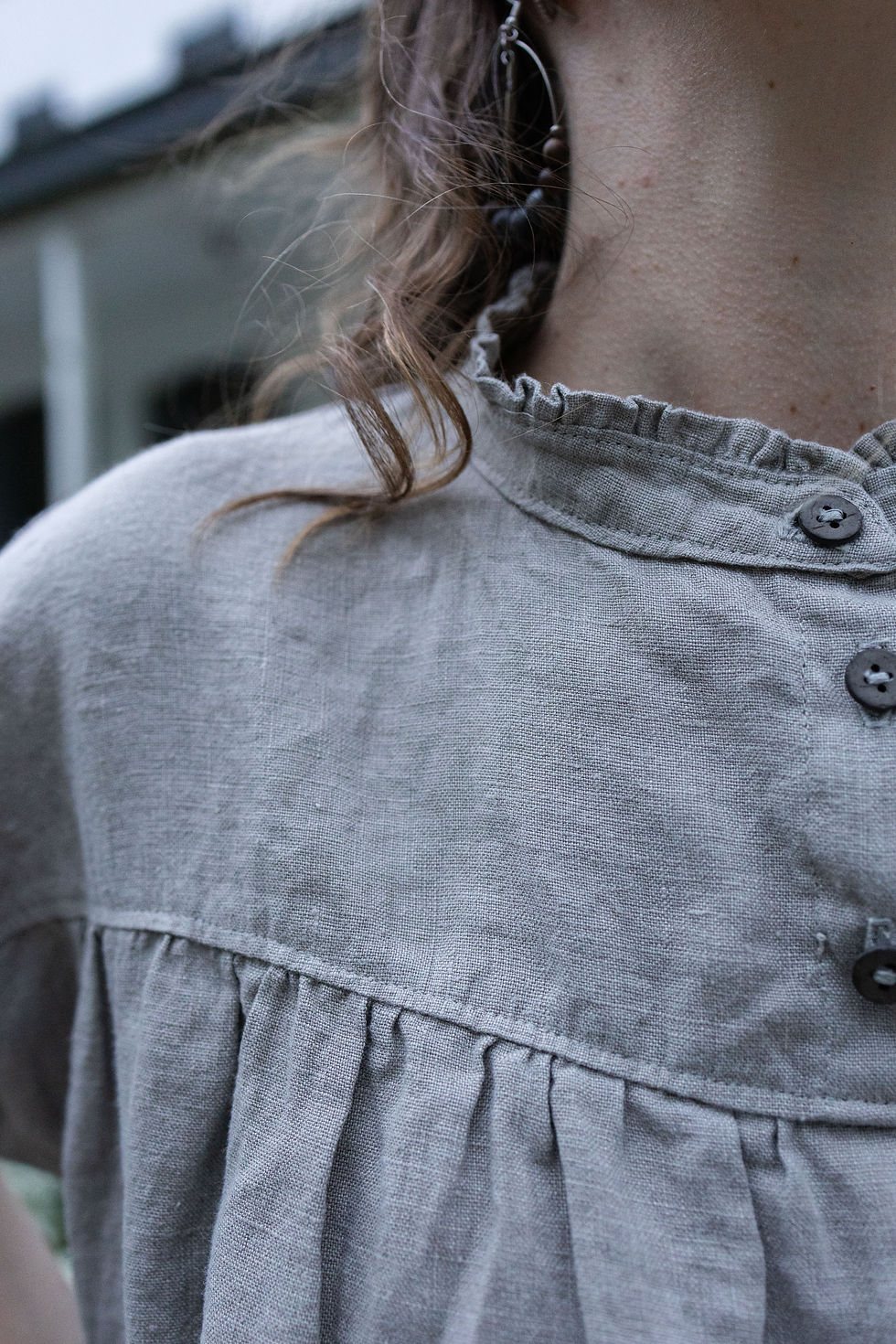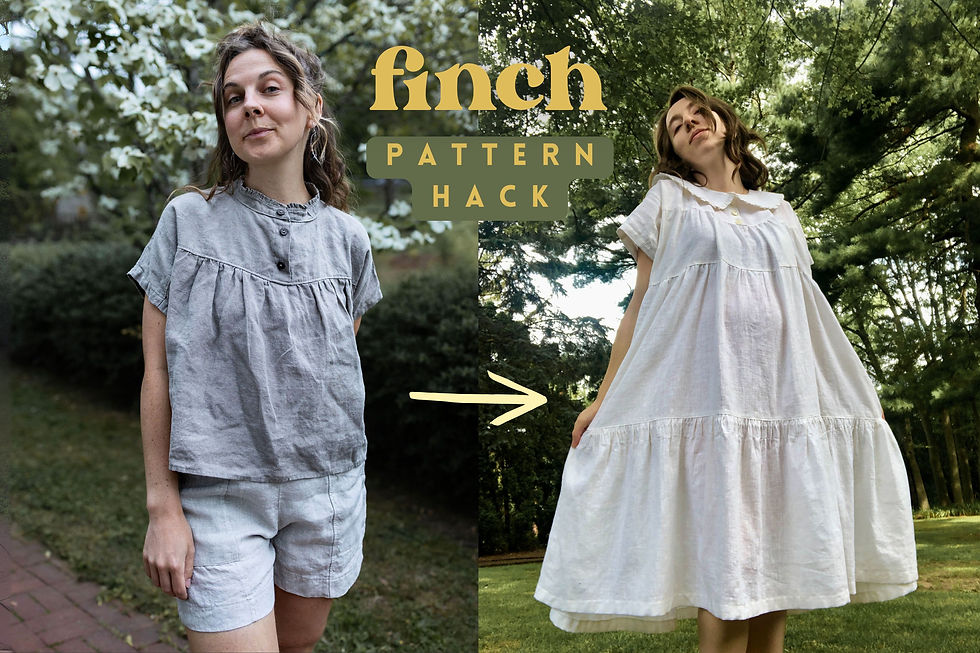Why I started a citizen science project about textile waste...
- Leah Widdicombe
- Jun 4, 2023
- 4 min read

It's June of 2023 and I've just launched a new citizen-science project called "Shirt-to-Dirt"!
If you haven't heard of it yet, here is SHIRT-TO-DIRT in a nutshell:
I'm sending experiment kits to participants from all over the U.S. so they can bury linen fabric samples in their backyards and see how long they take to biodegrade. Participants will unearth one piece of fabric every two weeks and submit photos of it online to build the first online visual database of linen biodegradation.
Join the SHIRT-TO-DIRT citizen science experiment anytime June-August 2023.


I'll quickly explain some terms and info to get us all on the same page, but if you don't need a refresher on biodegradation or fast fashion, skip down to the real reason I started this project!
What is biodegradation? What does it mean to biodegrade?
To degrade (in the way we are talking about it here) means to transform and break down into smaller molecules. To be biodegradable means that something can be broken down by bacteria or other living organisms. Biodegradation is a word that implies some sort of interaction and relationship; matter wouldn't biodegrade without its interaction with other living organisms. Biodegradation takes place with or without humans being present. For example, plants biodegrade in the forest when they are eaten or as they decompose into the soil on the forest floor, fish biodegrade in the ocean, and bugs biodegrade in our backyards.

What doesn't biodegrade very well is most types of plastic. What I am interested in is the plastic used to create clothing, such as polyester and nylon. Clothing that is made from these fabrics is predicted to take hundreds to thousands of years to biodegrade. We consume 60% more clothes than we did 15 years ago, but only keep them for half as long. Thrift stores cannot handle the quantity of clothing coming in, so a majority of our discarded clothing is being shipped overseas, crowding landfills.
Even in the time that we do own them, synthetic-fiber clothes are shedding tiny plastic fibers into our air and waterways. These are considered microplastics.
How does synthetic textile waste contribute to microplastic pollution?
When you wash a piece of plastic-based clothing, up to 70,000 pieces of microscopic plastic fibers break off and up to 40% of those that are not able to be filtered by municipal sewage treatment centers enter rivers, lakes, and oceans. Here, they move through the food chain, as they are consumed by filter-feeders in the ocean. Because they do not biodegrade, when one animal has consumed the plastic, its predator will also consume the plastic. Even humans who eat other animals that have consumed plastics!
What brought me to think about the biodegradation of plant-based fabrics, like linen:
I am a textile artist making and selling custom-sized clothing using plant-based fibers and dyes. Superficially, I think I started using linen fabric for all of my designs because I thought it had such an amazing texture to it. But I think the reason that texture was so alluring to me was because I knew it was plant-based and could compost. It's same reason why I prefer a wooden desk to a plastic one-- it has better texture and looks because it is made from organic materials-- you just can't beat the beauty of earth-stuff!

Okay WOW so is this just another soapbox about how we are hurting the environment?! Another thing for me to just feel anxious about?
I gave all the information above just to set the scene, logistically. But your lifestyle and behaviors shouldn't be driven by how many people in a blog or on tiktok tell you to do something to "save the planet". With the Shirt-to-Dirt citizen science project, I'm glad to provide information about textile waste, but I'm so much more excited to talk about our personal relationship with our bodies, the organisms we interact with, how we each transform and co-create spaces.
The REAL reasons I started the Shirt to Dirt citizen science project:
Ultimately, I wanted to start this project because I’m about to turn 30 and I’m sitting with a lot of questions. Questions about fabric, consumerism, trash, the life and death of biotic objects, the transformation of matter, the transformation of bodies (my body), my role as a ‘producer’ and a transformer of other biotic life, the multitude of ways I mentally detach and reconnect with my identity as a human animal.
You know… the small stuff 😊
You might be familiar with the emotional roller coaster of climate anxiety and feeling like everything you do is plagued with ~Pes$imistiC cApitaListic cOnsuMeristic coLoNiali$m in a siXth Ma$s ExtinCtion eVenT~
How do we find personal peace in that narrative?
I’d like to scramble our minds for a sec and forget the ideals of making linear ‘progress’ toward a ‘greater good’. Instead, I’d like to use this summer experiment to live right where we are. To rethink what it means to decay, break down, disintegrate, deteriorate. What does it mean to interact with plants (and the fabrics made from plants), to transform them and be transformed by them, to wear them to express our identities and share some of our microbiome with them as we live intimately with them on our skin? To take the time to consider how we return them to soil the way we will someday also return ourselves to the soil. Do either of us have any choice in the matter? Plants and us are always transforming.
I’m excited to see where this process spirals out to. We’ll collect visual data together about linen biodegradation, but we’ll also make new relationships with beings, soil, bodies, fabrics, clothing, time, and our own expectations.
I’m so happy to be on this journey, and I love that yours may look similar or different to mine.
Thanks so much for your curiosity and generosity with this project!
Lots of love,
Leah
Sound like something you'd like to be a part of? I'd love to have you!! ⬇️
Join the SHIRT-TO-DIRT citizen science experiment anytime June-August 2023.






Comments